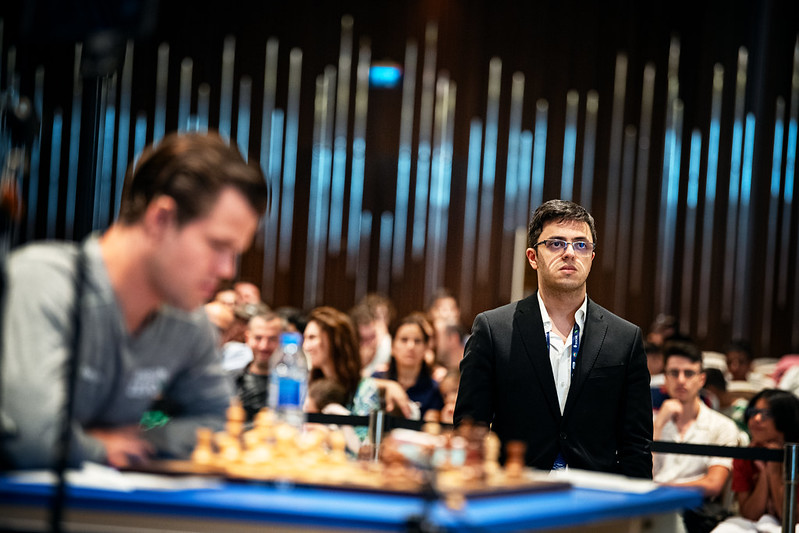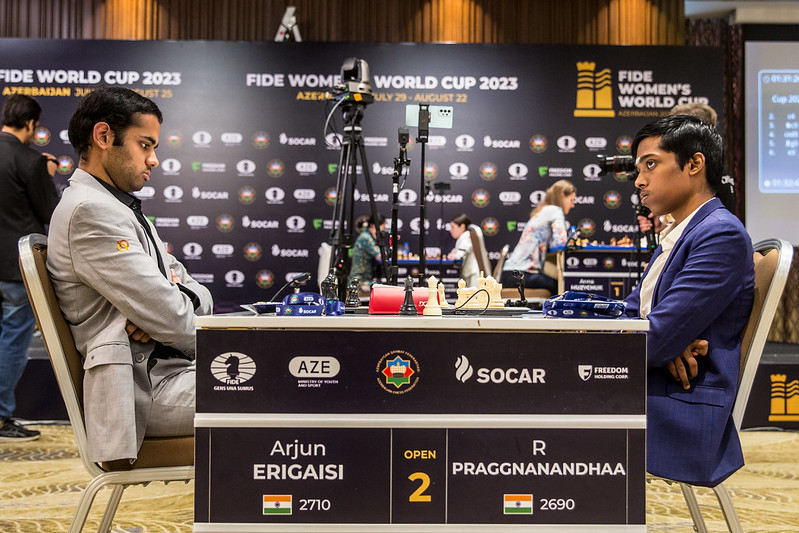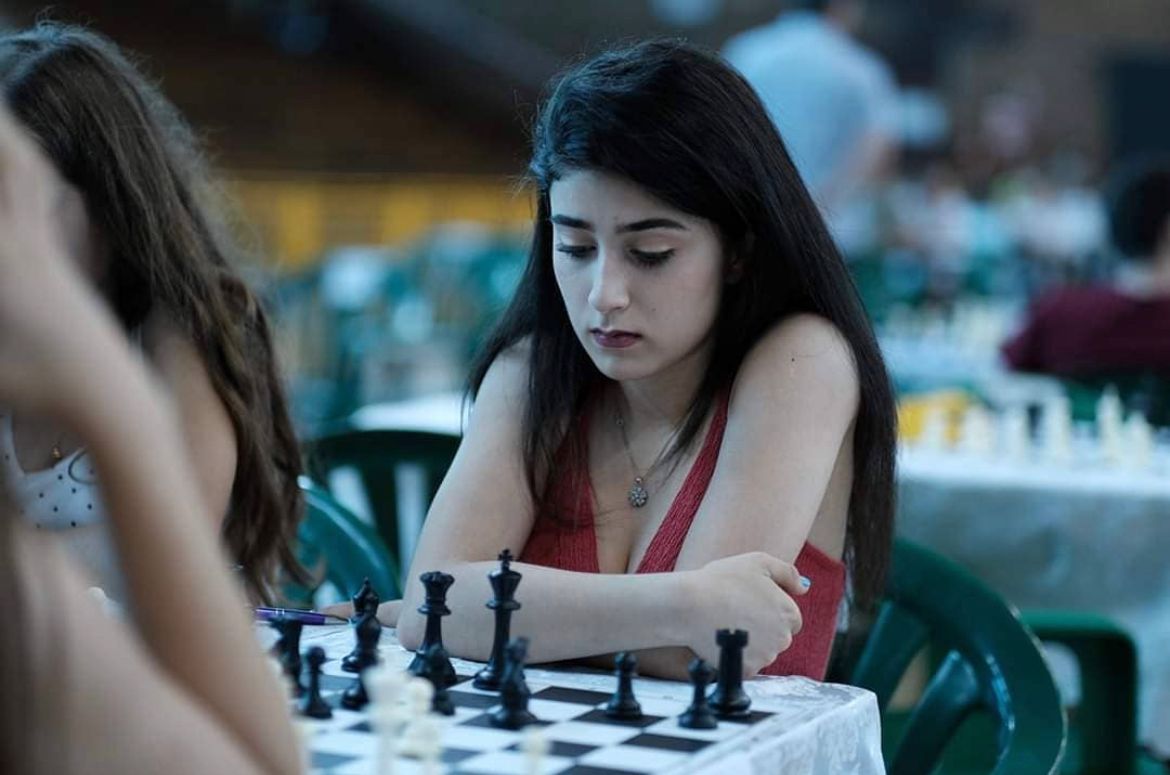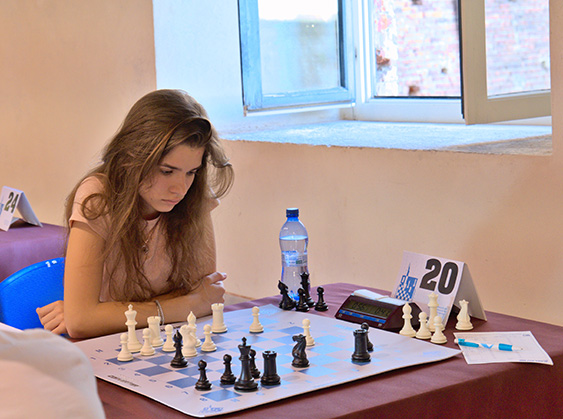FIDE World Cup: Road to the Candidates
The FIDE World Cup, held in Azerbaijan between 30 Jul – 24 Aug, turned this year into one of the strongest and most unforgiving chess tournaments the public has seen in a while. With over 30 000 viewers on live tournament broadcasts, the cup has rewarded the viewers with many headlines, such as that of Magnus Carlsen almost getting eliminated by Vincent Keymer. 206 players started in the Open section, and 103 players in the Women one. The three finalists of each section get qualified in the Candidates’ tournament next year. Adding to the high stakes is the tournament’s eliminatory format. Before we dive in any further, let’s revisit the cup’s knockout system. Every round, two players compete in a best-out-of-two match, starting with classical chess and decreasing in time in tiebreakers if necessary.

Read more about the tournament in my other post here.
This format is very pressuring and has one goal: to crown a winner from every dwell. On top of the ticket to the Candidates, the tournament has a prize pool of 2 million dollars. Top players have flown into Baku in both sections, with only a few notable absences from the top 20:
The leader of the Open section is Magnus Carlsen, whose decision to participate in the tournament has brought a lot of excitement among his fans. The former world champion has never won the FIDE World Cup and admitted in a press conference that he would like to add the title to his portfolio. However, Magnus’s third match made many people fear that this might not be his year, either. In a very tough rook and knights endgame, the 18-year-old GM Vincent Keymer seized the opportunity and beautifully converted an extra pawn knights endgame:

The position above highlights the critical moment of the game: the transition into a much better endgame for Keymer. Magnus’s last move, Nc7, allowed white to forcefully win a pawn, thanks to the active coordination between the knight and the rook. Despite being low on time, Vincent clocked in the additional 30 minutes in the next 3 moves and secured his position. Watch the full game here.
The next day, Carlsen faced a win on-demand situation. This is where the format of the cup proves unforgiving: a player defeated has his back against the wall and needs to be particularly creative to play for a win. With the white pieces, Magnus did what he does best: seized the opportunity to convert things into a slow and painful endgame.

Magnus just volunteered his pawn on b3 and blocked it with the king. It might seem odd, but the king is an excellent blocker on b2; plus, if rooks come off the board, the pawn becomes an easy target. Still, this might not look convincing for white, but look what happened in the next 10 moves:

Ten moves ago, one could overlook that the a-pawn is a passed pawn. However, the position above clearly forecasts white’s winning plan here: turn the a-pawn into a queen.
After 67 moves, it became clear that the two players will head to the tie breaks.
The next day, Magnus won the fourth game after three consecutive draws. Vincent Keymer showed incredible strength. His position was often very stressful, not only on the board but also emotionally. Defeating Carlsen in classical chess is the biggest moment in Keymer’s career so far, and his departure from Baku left many wanting to see more of his chess.

However, the intensity of the moment left a mark on Carlsen’s attitude around the tournament. After his victory, a tired Magnus Carlsen confessed at the press conference that he was questioning his decision to play in the World Cup. “Almost since day one, I have been wondering – what am I doing here? Why am I spending all this time playing classical chess, which I just find … you know, stressful and boring?” said the world champion in the post-match interview.
I don’t know about boring, but I can easily imagine the stressful part. With the help of a sleek engine bar, chess looks easy and intuitive, and it’s easy for people to understate the uncertainty the players face on the board. After all, the players are human, and therefore subject to bad days, exhaustion, or nerves that can interfere with their play.
In another conference moment, Magnus opened up about the pressure of facing elimination, a piece of news that would circle around the chess community in an eye blink. “First of all, you are trying to really do well – that was my thought yesterday. But if I lose, if I bust out tomorrow, that’s going to be humiliation in the World Cup. I know that I will forget about it in a couple of days, but still … it’s less than ideal.”
Carlsen’s interview made some worry that he might be approaching the end of his career, at least in classical chess. His withdrawal from the World Championship, along with some of his past interviews, strongly hinted towards that. Yet, there was one more thing to be picked from his statements: that he was determined to fight until the end in Baku.
Before we move on, another fantastic match-up in round 4 needs a shout-out. At the end of the first tiebreak, the young Indian GM Rameshbabu Praggnanandhaa eliminated the live world’s number 3, GM Hikaru Nakamura. Their dwelling was much anticipated by the chess community, and viewers also gained insights from Hikaru’s YouTube videos on his match against Pragg. After mixing up a theoretical line in the opening, white found himself with a knight trapped on h4, struggling for compensation:

The game lasted twenty more moves, and the young GM secured his pass in the next round with a lot of professionalism. In a position like the one above, a player in white shoes might relax and give black unnecessary counter-play. After all, we all know how easy it is to throw away an advantage when the opponent starts complicating the position. That wasn’t the case for Praggnanandhaa.
By round 5, many established players had been eliminated. GM Peter Svidler lost against the home player GM Abasov Nijat. The Azerbaijani GM proved to be in excellent form for the World Cup. In the third round, he defeated GM Anish Giri after 8 back-and-forth games. In fact, he is one of the four left players in the cup as I am writing this article. After winning against Svidler and Giri, Abasov had to get past Salem AR Saleh and Vidit Santosh Gujrathi. The latter also had a fantastic tournament up to meeting Abasov. Vidit eliminated the World Championship challenger, Ian Nepomniatchi.

Abasov has gained the admiration of those watching the live broadcasts from Baku, and his strength in this tournament put him on the watchlist. On Saturday, he is meeting no other than Magnus Carlsen.
Interestingly, Carlsen revealed after his match with Gukesh that he does not intend to play in the Candidates Tournament. It should be noted that Magnus would most likely still qualify for the Candidates as the highest-rated player. This was sad news for Magnus’s fans, who were hoping for his return in the fight for the world title. However, this hardly came as a surprise. Still, Magnus’s decision is great news for his opponent: Abasov could go at the Candidates regardless of his result against Magnus.
On the other side of the bracket, a very intriguing match-up is about to take place: GM Fabiano Caruana vs. GM Rameshbabu Praggnanandhaa. Caruana has had pretty smooth progress in the past three rounds, winning his dwells in the classical stage. Not going to the tiebreakers gives the winner an extra rest day and a more comfortable feeling around the tournament. On top of this, GM Praggnanandhaa just experienced a very tough battle with his compatriot, GM Erigaisi Arjun. With two years between them, the two players are no strangers to each other’s style. This prolonged their fight all the way to the cruelest of tie breaks – the “sudden death”, a 3+2 knockout match. In the previous four games, GM Erigaisi won on demand two times in a row. That translates to the following cycle of emotions for the leading player:
- Winning the first game and feeling like you’re with one foot in the next stage
- Keeping your composure to play a solid game and put a draw in your pocket
- Realizing you’re losing, your opponent is thrilled and you have to start over
- Repeat
In their decisive round, the emotions were high. The format of this final tiebreak amplifies the tension of every move, and both players need to play their best chess without taking significant risks. The over-the-board experience highlights another stress factor: the clock. This often leads to what some call the “flying pieces” phenomenon: when players rush their move so much, the pieces start falling on the board. At move 37, Pragg and Erigaisi entered the “under 10 seconds” zone. Out of all chess situations, this one is probably the most stressful: every move needs to be done almost instantly, and an accidental piece drop can make you miss and lose on time. The 2 seconds increment is often only enough to keep you in the game, but not enough to allow you to gain more time easily.

After a nail-biter match, R Praggnanandhaa emerged as the winner but marked one of the most heart-breaking eliminations of the World Cup. Both players from India are young and extremely talented, so the pairing was upsetting. And this wasn’t the only unfortunate pairing. The Norwegian GM Aryan Tari had to face his compatriot and friend, Magnus Carlsen, in round 3. Another Indian chess superstar, GM Gukesh Dommaraju, faced GM S L Narayan earlier in the cup. Despite being eliminated in the quarters by Magnus, Gukesh’s progress was very fruitful, becoming India’s number 1 and the world’s number 8 and live ratings. India’s number 1 position belonged until now to the former world champion, GM Viswanathan Anand. Vishy Anand is often associated with the immense growth India has seen in chess in the past years.
Certainly the most unfortunate pairing occurred in the Women’s section, where the two Muzychuk sisters, Anna and Mariya, faced each other in the fourth round. Throughout their careers, the Ukrainian grandmasters have played each other 32 times, drawing 28 of their games together. I’m excited to share more about this dwell, as usual as other interesting facts and match-ups in the Women’s Fide World Cup in my next blog post – stay tuned!
The uniqueness of the Fide World Cup has made possible some of the most fascinating encounters in chess. Its format has given many players fighting chances against opponents they wouldn’t normally get to play or settle many previously drawn disputes. With the finals around the corner, try to predict the outcome of the remaining matches in the comments below!

Author



8 Comments
Rastrear Teléfono Celular · March 28, 2024 at 4:18 pm
Cuando intenta espiar el teléfono de alguien, debe asegurarse de que no encuentren el software una vez que esté instalado.
Rastrear teléfono · March 30, 2024 at 2:57 pm
Instalación simple y descarga gratuita, no se requieren conocimientos técnicos y no se requiere raíz.Grabacion de llamadas, Grabacion de entorno, Ubicaciones GPS, Mensajes Whatsapp y Facebook, Mensajes SMS y muchas características mas.
Rastrear Teléfono Celular · March 31, 2024 at 1:48 am
Puede utilizar un software de gestión para padres para guiar y supervisar el comportamiento de los niños en Internet. Con la ayuda de los siguientes 10 software de administración de padres más inteligentes, puede rastrear el historial de llamadas de su hijo, el historial de navegación, el acceso a contenido peligroso, las aplicaciones que instalan, etc.
Rastrear Teléfono Celular · April 2, 2024 at 5:33 pm
Rastreador de teléfono celular – Aplicación de rastreo oculta que registra la ubicación, SMS, audio de llamadas, WhatsApp, Facebook, fotos, cámaras, actividad de Internet. Lo mejor para el control parental y la supervisión de empleados. Rastrear Teléfono Celular Gratis – Programa de Monitoreo en Línea. https://www.xtmove.com/es/
binance konta izveide · April 16, 2024 at 10:41 pm
Thank you for your sharing. I am worried that I lack creative ideas. It is your article that makes me full of hope. Thank you. But, I have a question, can you help me?
To tài khon binance · April 22, 2024 at 3:00 am
Thanks for sharing. I read many of your blog posts, cool, your blog is very good.
Prijava · April 29, 2024 at 11:37 am
I don’t think the title of your article matches the content lol. Just kidding, mainly because I had some doubts after reading the article.
Binance · May 4, 2024 at 8:19 am
Your article helped me a lot, is there any more related content? Thanks!